Log in or create new account to save this product to your wishlist.
How to Restore An Over-Fertilised Lawn: A Step-by-Step Guide
Probably the least-acknowedged cause of yellowing grass! Too much of a good thing is bad! Find out if you're over-fertilising your lawn.
Latest articles
7 MIN 22 Jul How to keep your lawn in shape this summer 9 MIN 15 Jul Watering Your Garden: 10 Top Tips! 11 MIN 15 Jul Is Your Grass Type Right for your Garden? 11 MIN 10 Sep Create Your Low-Maintenance Garden – Tips and Ideas 11 MIN 08 Sep The Ultimate Guide to Choosing the Perfect Hedges for Your Garden 12 MIN 30 Aug The Top 20 Evergreen Climbers to Transform Your GardenA lush, green lawn can make all the difference in the look of your home. But too much of a good thing can quickly turn your beautiful, healthy lawn into an over-fertilised disaster.
- Understanding Over-Fertilisation
- Diagnosing An Over-Fertilised Lawn
- Treating Your Over-Fertilised Lawn
- Removing Dead Grass from an over-fertilised lawn
- Adding Beneficial Bacteria to address over-fertilisation
- Apply Fertiliser Sparingly
- Watering Your Treated Lawn
- Overseeding Your Lawn after over-fertilisation
- Ongoing Maintenance for a Healthy Lawn
Over-fertilisation can burn your grass and kill off beneficial bacteria, leaving behind a patchy, yellowed lawn.
Luckily, there is a way to restore your lawn to its former glory., Learn how to fix your lawn after over-fertilisation with our step-by-step guide, and get back to enjoying a beautiful, healthy lawn.
Understanding Over-Fertilisation
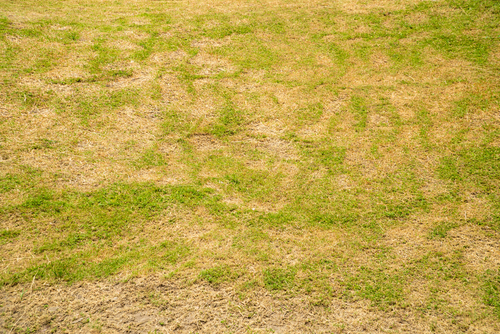
What exactly is over-fertilisation, and why does it happen?
As the term suggests, over-fertilisation results from excessive lawn feeding, causing a build-up of soil nutrients that can lead to an increased concentration of nutrients in your lawn’s water supply.
This can, in turn, cause a build-up of harmful chemicals, such as nitrogen and phosphorous, which can burn your lawn and kill off beneficial bacteria that keeps your lawn healthy.
Diagnosing An Over-Fertilised Lawn

If you suspect your lawn is showing signs of over-fertilisation, you could send a sample of your soil away to be tested. However, that can be a slow process.
So:
These are the symptoms to look out for:
Too much nitrogen (N)
If your grass grows more quickly than you can cut it, you’ve likely added too much nitrogen to your soil. While nitrogen offers rapid and lush grass growth, over-stimulated growth can lead to shallow roots, which lack drought resistance.
Additionally, too much quick-release nitrogen can scorch the leaf and, in extreme cases, cause the plant to die. On the other hand, a lawn with too little nitrogen looks yellow and thin.
I recommend using a slow-release fertiliser — you’re much less likely to cause scorching or over-fertilisation.
Too much phosphorus (P)
Phosphorus helps promote root growth, especially in young lawns, and helps build robust and thick turf.
However, too much phosphorus affects your grass plants’ ability to absorb other nutrients, such as zinc and iron.
Too much potassium (K)
Potassium helps increase your grass plants’ resistance to disease and drought.
However, too much potassium causes grass to become pale and lacklustre, affecting your grass plants’ ability to absorb other nutrients, such as calcium, zinc, magnesium, and iron.
Too much magnesium oxide (MgO)
Magnesium oxide stimulates your grass plants’ cellular structure, boosting the green colour by improving the plant’s ability to photosynthesise.
While MgO helps grass turn green, too much will turn the leaves yellow.
Get your soil tested
If you’re unsure how much fertiliser you should add, take a soil sample and send it to a lab for testing. This will tell you exactly how much phosphorous and nitrogen are in your soil.
Treating Your Over-Fertilised Lawn
Once you’ve identified and treated the over-fertilisation in your lawn, you can restore it to its former glory.
Start by mowing, as this helps increase aeration and improve the health of your lawn. Use a weed killer to eliminate weeds growing in your lawn due to over-fertilisation.
Use the definitions above to identify which type of fertiliser to use. Here’s a table to help you choose a fertiliser to address nutrient deficiency or balance.
| MOOWY product | Nitrogen (N) — % | Phosphorus (P) — % | Potassium (K) — % | Magnesium Oxide (MgO) — % | Iron Sulphate (Fe) — % |
| 2-in-1 Moss Killer and Fertiliser | 3 | 7 | 10 | 3 | 8 |
| All Round Fertiliser | 6 | 5 | 12 | 2 | – |
| Spring Boost | 12 | 5 | 5 | 2 | – |
| Easy Mow | 14 | 5 | 10 | 2 | – |
| Lawn Starter | 6 | 10 | 8 | 2 | – |
Once you’ve removed any weeds and cut your lawn, it’s time to fertilise, although it might be a good idea to let it recover for a couple of months before adding more chemicals.
When you do apply your fertiliser, make it a slow-release formula (like MOOWY’s range) — fast-acting fertilisers can burn the grass. Slowly applying fertiliser will help to restore the nutrients in your soil and increase the health of your lawn.
If you suspect there are pathogens or pathogens in your soil, you can also add beneficial bacteria to your lawn to help restore its health. You can find these in gardening centres or online.
Removing Dead Grass from an over-fertilised lawn
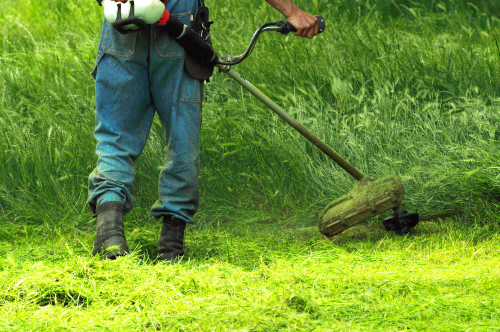
Once you’ve treated your lawn, it’s time to remove any dead grass. Use a weed whacker to cut the dead grass out of your lawn.
When cutting out the dead grass, leave a one-inch margin. This will ensure the weed whacker doesn’t accidentally damage your healthy lawn.
Ensure you only remove the dead grass by first flattening the grass with a lawn roller to get a better view of what’s happening in your lawn.
Adding Beneficial Bacteria to address over-fertilisation
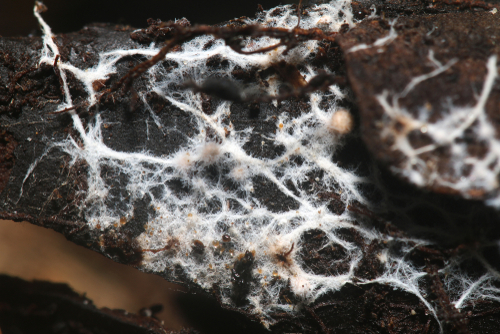
As mentioned above, you can also add beneficial bacteria to your lawn to help restore its health. Use microorganisms like mycorrhiza to create a symbiotic relationship with your grass’s roots.
This can help reduce the nutrients in your soil and remove harmful chemicals from your water supply, preventing future over-fertilisation and keeping your lawn healthy.
It can be a good idea to add beneficial bacteria to your lawn while adding fertiliser. Buy beneficial bacteria in garden centres or online. Simply add it to a watering can, and water your lawn to add the bacteria to your yard.
Apply Fertiliser Sparingly
While you should add fertiliser to your lawn each spring to help maintain its health, you should avoid over-fertilising it.
If your soil test shows you have high phosphorous and nitrogen levels, be sure to apply only a small amount of fertiliser. If you over-apply fertiliser, you risk burning your lawn and killing off the beneficial bacteria in your yard.
It’s also important to be sure the fertiliser you’re applying is safe for your lawn. Some fertilisers are better for certain grass types, so read the label and use it according to the instructions.
Watering Your Treated Lawn
When restoring your lawn after over-fertilisation, it’s also important to water it regularly. You should water at least once a week, offering a thorough soaking.
This will help to keep your lawn hydrated and prevent future over-fertilisation.
If you notice your lawn is turning yellow or brown, it could be that you’re not watering it enough, so be sure to increase the watering frequency.
Overseeding Your Lawn after over-fertilisation
If you’ve tried restoring your lawn, but nothing seems to have worked, it may be time to consider overseeding, which helps replace the dead grass while keeping your turf young and healthy.
Before overseeding, aerate your lawn to help the new grass get a foothold in the soil. Use a hollow tine aerator, an aerator roller, or lawn aerator sandals.
Once you’ve aerated your lawn, apply a high-quality lawn seed mix and water it in.
Ongoing Maintenance for a Healthy Lawn
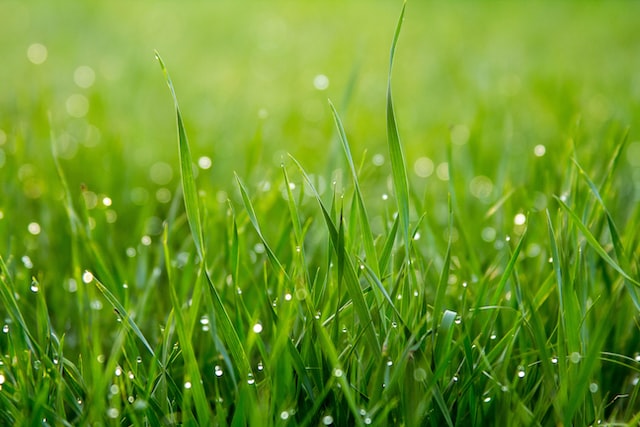
Once you’ve restored your over-fertilised lawn, you’ll want to keep up with regular lawn maintenance to keep it healthy.
So, create a lawn care plan.
A lawn care plan can help you stay organised and ensure you’re doing all you can to keep your lawn healthy. When creating a lawn care plan, include regular mowing, fertilising, weeding, and watering.
If you follow this lawn care plan, you should be able to keep your lawn healthy and prevent future over-fertilisation.
Any questions?
We hope you have all the info you need to help deal with an over-fertilised lawn. But if you have any questions, please get in touch.
We’re always happy to help.
Thanks for reading.
Fertilising your grass boosts the nutrient levels of your soil, which helps create a healthy green lawn. However, over-fertilising has the opposite effect – making your grass turn yellow. Over-fertilising your lawn prevents your grass plants from absorbing the typical balance of nutrients that help them thrive. We recommend fertilising no more than 3 or 4 times a year.
The most obvious sign of over-fertilising your lawn is yellowing leaves and a generally lacklustre appearance. Over-fertilisation is probably the least-acknowledged lawn care problem. We recommend fertilising at least three times a year, but no more than four!
Firstly, stop fertilising, giving your lawn a chance to recover. Remove any dead grass, then overseed with a high-quality lawn seed mix. Water well, then slowly re-introduce fertiliser after a month or so.
Leave a comment
Your answer will be displayed on the site and the interested party will be notified by email.
Leave a comment
Have a question or want to share your experience? Leave us a comment.
Read more
The best tips and tricks for a lush green lawn
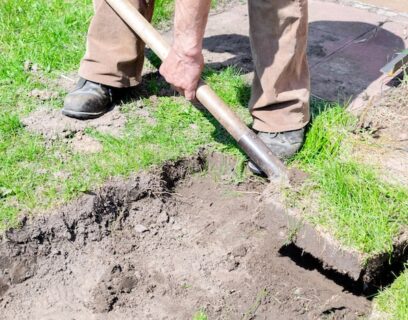 6 MIN
05 Mar
Removing Old Turf: why, when, and how?
6 MIN
05 Mar
Removing Old Turf: why, when, and how?
 7 MIN
10 Feb
Everything You Need to Know About Lawn Sanding
7 MIN
10 Feb
Everything You Need to Know About Lawn Sanding
 Scarifying Kit
All products after scarifying | Quickly restores the lawn after scarifying | Outsmart weeds quickly with the use of this kit
From: € 39.99
Scarifying Kit
All products after scarifying | Quickly restores the lawn after scarifying | Outsmart weeds quickly with the use of this kit
From: € 39.99
 Spring Lawn Care Kit
MOOWY’s choice for the spring | Quick recovery of your lawn after winter | A strong lawn prevents weeds
From: € 25.99
Spring Lawn Care Kit
MOOWY’s choice for the spring | Quick recovery of your lawn after winter | A strong lawn prevents weeds
From: € 25.99
 Long Lasting Lawn Fertiliser
Effective for 90 days | See results in 14 days! | Suitable for all types of grass and soil
From: € 13.99
Long Lasting Lawn Fertiliser
Effective for 90 days | See results in 14 days! | Suitable for all types of grass and soil
From: € 13.99
Do you want a lawn calendar?
🌱 All important maintenance moments for your lawn during the year. Leave your email and we will send you the lawn calendar for free.
Enter your email
Receive the lawn calendar in the mail
Enjoy a green lawn all year round!




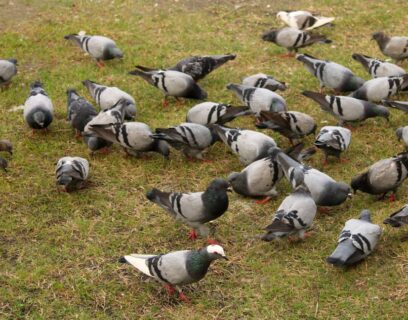





Comments (0)
There are no comments yet. Well then, what are you waiting for to
Be the first to write your comment!inaugurate this pretty page?
Do you have some comments?